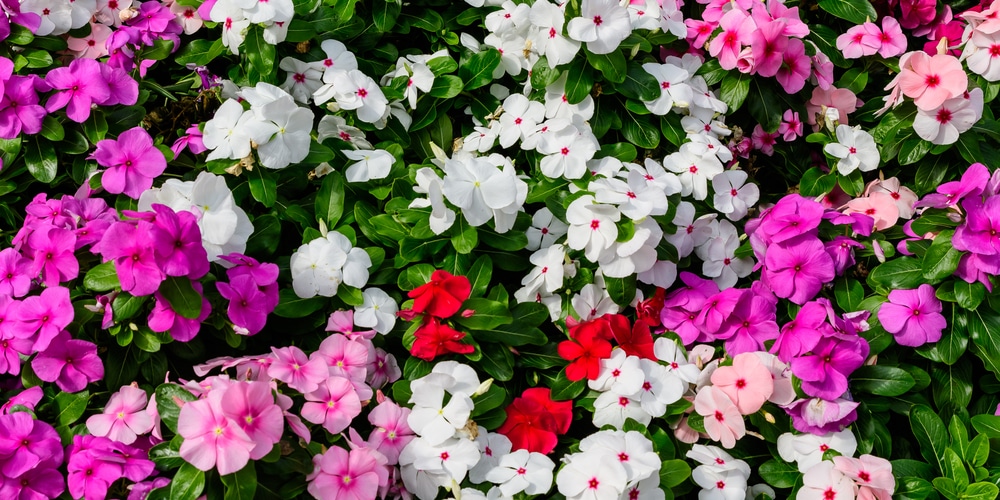Perennials and annuals are two common types of plants that gardeners grow in their landscapes. Although they are both grown for their leaves, flowers, and other growing parts, there are some key differences between the two that should be taken into consideration when choosing which type of plant is right for your home.
As with all gardening, seasonal cycles are an important factor to consider when choosing the right plant for your space; if you have a green thumb and also happen to enjoy turning your front lawn into a canvas every six weeks or so, then perennials might be the best option for you.
However, if you tend to grow the same few plants year after year without ever branching out and trying something new, you might want to consider an annual instead.
What are impatiens? Are they annual or perennial?
Impatiens were first discovered in Africa’s eastern areas. Colorful, variegated blooms cover the plant’s slender, succulent branches. It is propagated through the use of seeds and stem cuttings. Impatiens thrive in the shade and require little water.
Impatiens are shade-loving plants, so temperatures above 85 F (29 C) are unsuitable for growing them. After the last spring frost, transplants of impatiens can be planted. They can be annually planted in rich soil, and impatiens are a popular garden plant.
From May until August, you can find impatiens in bloom. They thrive in damp environments and can be grown in the ground, as well as in containers and pots. Henna for hair coloring was traditionally made using impatiens dyes in ancient China.
Springtime is the best time of year to find impatiens since the conditions are ideal for their growth and blooming. They’re fantastic flowering houseplants as well.
Also, more than a thousand species of flowering plants belong to the Impatiens genus, which are commonly cultivated in the tropics and in North America. Touch-me-nots, snapweed and busy Lizzie are just some of the many names given to these flowers.
The adjective ”impatient,” which refers to the force with which blossoming seed pods discharge their seeds, was used to name the genus.
The vividly colorful blossoms, easy maintenance, and ability to survive in shady settings make impatiens one of the most popular annual flowers.
Are they annual or perennial? Impatiens are perennials in USDA zones 10 and 11, but exclusively in those areas. However, Impatiens can be perennials and annuals at the same time.
Do impatiens come back every year?
Annual impatiens (Impatiens balsamina) only bloom for a single growing season and are hence known as annuals. On the other side, the perennial impatiens (Impatiens walleriana) come back year after year and can be routinely pruned to produce new blooms. Impatiens can be grown as both an annual and a perennial.
In planters, window containers, and hanging baskets, as well as for the land cover, borders and the edges of walkways, they are a great choice.
What is a perennial plant?
A perennial plant is one that is able to produce new stems or roots each year or season. Because they are perennial, they can grow and produce flowers or fruits year after year on a single stem or root.
This is different from annual plants, which are able to produce new leaves and seeds each year but do not have the ability to grow or produce additional stems or roots each year.
This can make perennial plants more expensive to purchase and maintain in the garden because they are able to grow for decades, while annuals are typically grown for a single season.
What is an annual plant?
An annual plant is one that is able to produce seeds and then die back to produce new seeds the following year. They do not have the ability to grow or produce new stems or roots each year.
Annual plants are often grown for their bright, colorful, edible flowers, seeds, and leaves. Many annual plants are grown for their ability to produce seeds for the first time and then die back the following year so that new seedlings can grow from the seeds as the plants die.
These seeds are often sold by nurseries and common garden centers and are often referred to as “annuals” because they cannot produce new stems or roots each year.
Differences Between Perennial and Annual Plants
– Perennial plants: For those who can grow and stick with a single type of perennial plant for the length of their lives, these can last for several decades. Those who cannot stick with a single plant type over the long term can often find success with a few types of perennials.
– Annuals: While annuals can produce bright and often colorful flowers, seeds, and leaves, they are not able to produce new stems or roots each year.
– Difference in growth cycle: Perennial plants are able to come back each year, while annuals are able to bear flowers and produce seeds but then die.
– Size: Perennial plants can grow to be much larger than annual plants, although the majority of annuals are not able to grow beyond a few inches in height.
– Bloom time: The growth of perennial plants is typically much slower than that of annual plants. In many instances, annuals will bloom for a single period before dying back to produce new seeds.
Related Article: Flowers That Start With I

